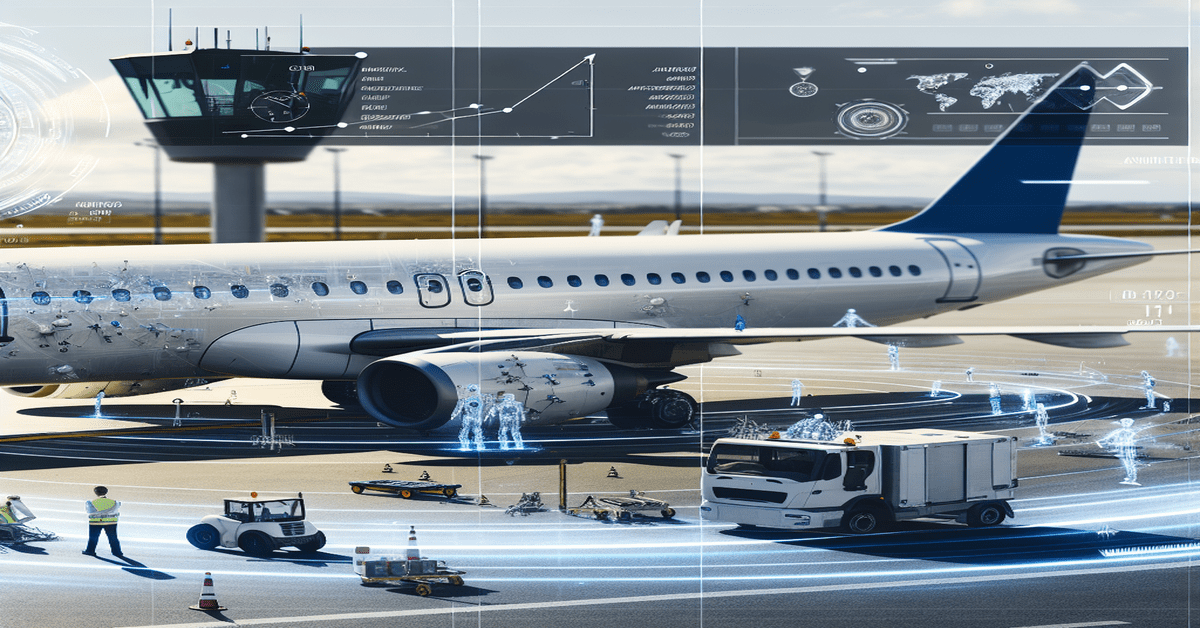AI Revolutionizes Aviation Analytics: Driving Efficiency, Safety, and Growth
The aviation industry has always been at the forefront of technological innovation, constantly seeking ways to improve safety, efficiency, and passenger experience. In recent years, the integration of artificial intelligence (AI) in aviation analytics has emerged as a game-changer, transforming the way airlines and airports operate. As the industry generates vast amounts of data from various sources, including aircraft sensors, weather systems, and operational systems, AI has become an indispensable tool for unlocking valuable insights and driving informed decision-making.
The Power of AI in Aviation Analytics
AI technologies, such as machine learning and predictive analytics, have revolutionized the aviation analytics landscape. These advanced algorithms have the capability to process and analyze massive datasets in real-time, enabling aviation companies to extract meaningful patterns and trends that would otherwise remain hidden. By leveraging AI, the industry can optimize various aspects of its operations, from predictive maintenance to flight route optimization and enhanced passenger experience.
One of the most significant applications of AI in aviation analytics is predictive maintenance. With the help of AI algorithms, airlines can accurately predict equipment failures and proactively schedule maintenance activities. By analyzing data from aircraft sensors, maintenance logs, and historical records, AI models can identify potential issues before they escalate into critical failures. This proactive approach not only enhances safety by reducing the risk of accidents but also minimizes downtime and improves operational efficiency.
Operational Efficiency and Cost Savings
In addition to predictive maintenance, AI plays a crucial role in optimizing flight operations. By analyzing real-time data from various sources, such as weather conditions, air traffic, and aircraft performance, AI algorithms can assist in route planning and fuel optimization. This not only reduces fuel consumption and carbon emissions but also minimizes delays and improves overall operational efficiency. According to a report by MarketsandMarkets, the aviation analytics market is expected to grow from $3.82 billion in 2025 to $6.78 billion by 2029, at a Compound Annual Growth Rate (CAGR) of 15.4%. This growth is primarily driven by the increasing demand for predictive maintenance, safety analytics, and real-time data processing.
Moreover, AI-powered analytics enables aviation companies to comply with stringent regulatory requirements more effectively. By providing data-driven insights and automated reporting capabilities, AI assists in ensuring compliance with safety standards, environmental regulations, and other legal obligations. This not only helps airlines and airports avoid costly penalties but also enhances their reputation and builds trust among passengers and stakeholders.
Enhancing Passenger Experience
AI analytics also plays a significant role in improving the passenger experience. By analyzing customer data, such as booking patterns, preferences, and feedback, airlines can personalize their services and offer tailored recommendations to individual passengers. This personalized approach can lead to increased customer satisfaction, loyalty, and revenue growth. Furthermore, AI-powered chatbots and virtual assistants can provide instant support to passengers, answering queries, and resolving issues in real-time, thereby reducing wait times and improving overall customer service.
The Future of AI in Aviation Analytics
As the aviation industry continues to embrace AI, the potential for further innovation and growth is immense. According to a report by MarketsandMarkets, the global artificial intelligence in aviation market is expected to reach $20.63 million by 2034, growing from $5.96 million in 2025. This rapid growth is a testament to the transformative power of AI in the aviation sector.
However, the successful implementation of AI in aviation analytics requires a collaborative effort from all stakeholders, including airlines, airports, technology providers, and regulatory bodies. It is essential to establish clear guidelines and standards for data privacy, security, and ethical use of AI to ensure the responsible and sustainable development of AI-powered solutions.
Conclusion
The integration of AI in aviation analytics is revolutionizing the industry, driving unprecedented levels of efficiency, safety, and growth. By leveraging the power of machine learning and predictive analytics, aviation companies can optimize their operations, reduce costs, and enhance the passenger experience. As the industry continues to evolve and embrace AI, it is poised for a future where data-driven decision-making becomes the norm, and innovation knows no bounds.
As an industry expert, I encourage aviation professionals and enthusiasts to stay informed about the latest developments in AI and aviation analytics. Engage in discussions, share your insights, and explore the vast opportunities that AI presents for the future of aviation. Together, we can shape a smarter, safer, and more efficient aviation industry powered by artificial intelligence.
#AviationAnalytics #ArtificialIntelligence #IndustryTrends #FutureOfAviation
-> Original article and inspiration provided by LeadsProMax.ai
-> Connect with one of our LeadsProMax.ai Strategists today at LeadsProMax.ai


